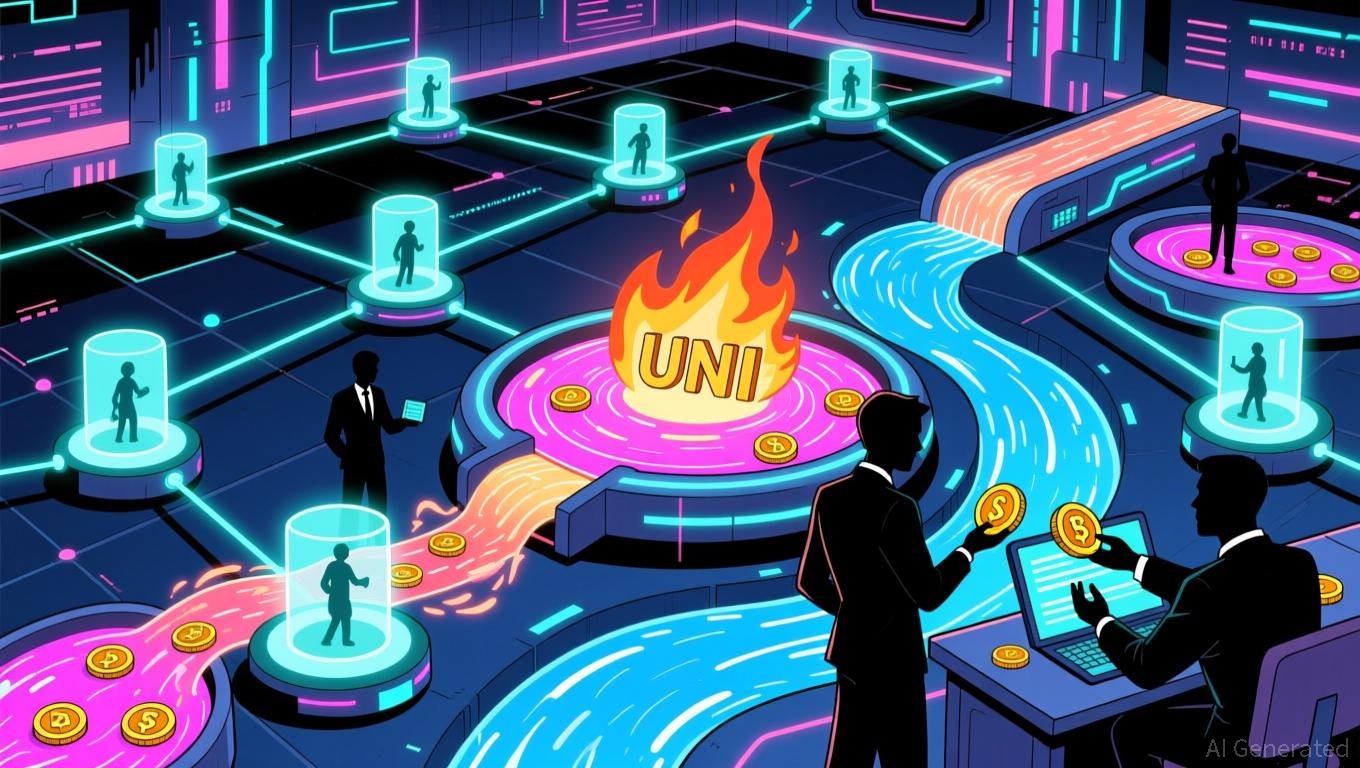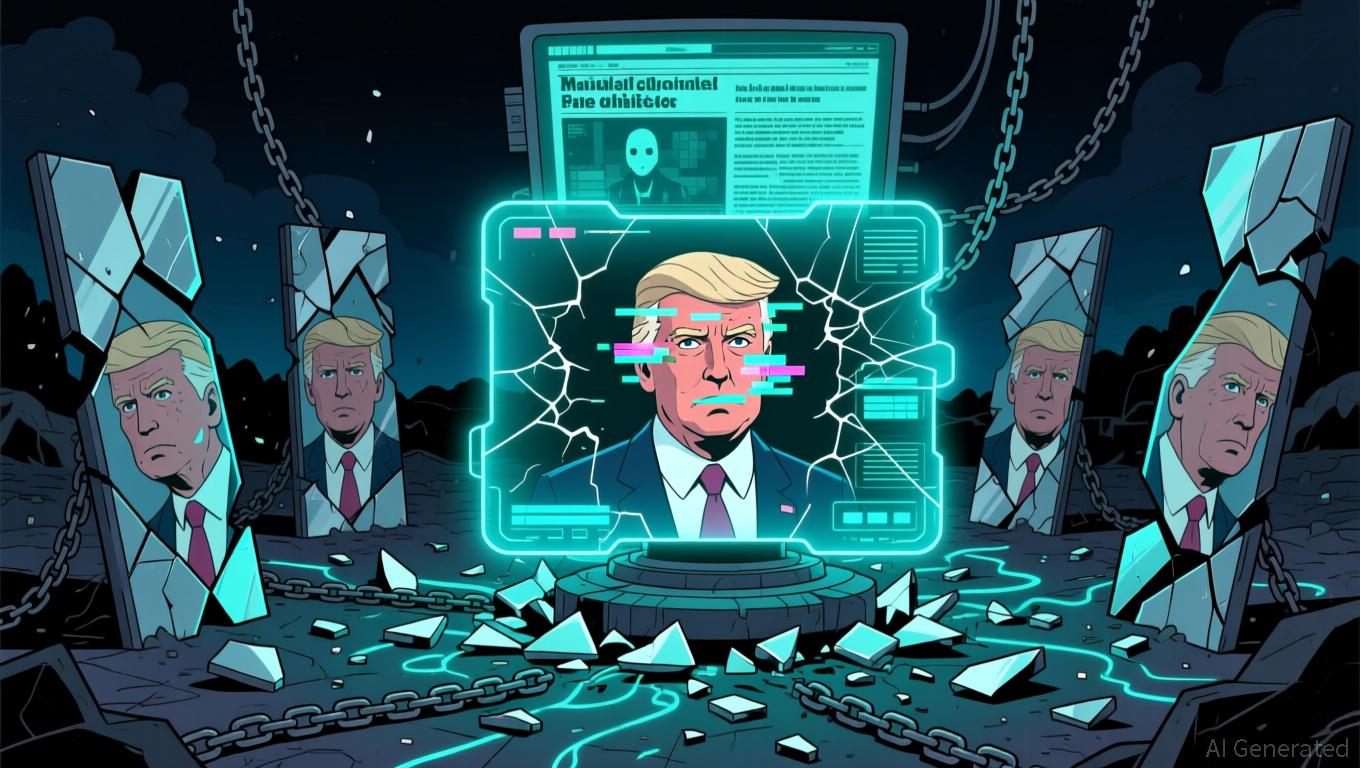Uniswap News Today: Uniswap’s UNIfication Brings Ecosystem Incentives Together for a Lasting DeFi Landscape
- Uniswap proposes "UNIfication" to overhaul tokenomics, governance, and position itself as the default tokenized asset platform. - The plan includes burning 100M UNI tokens, activating protocol fees, and introducing fee discount auctions to boost token value. - Governance consolidation under Uniswap Labs aims to streamline operations while avoiding SEC scrutiny by dissolving the nonprofit foundation. - Market analysts highlight potential price stability and ecosystem alignment, though major stakeholders l
Uniswap, a top decentralized exchange (DEX), has introduced a major governance initiative called "UNIfication." This plan seeks to revamp both its tokenomics and governance framework, aiming to establish Uniswap as the primary hub for tokenized assets. Announced on November 10, 2025, the proposal features the activation of protocol fees, a large-scale burn of
The plan includes a retroactive burn of 100 million UNI tokens from the treasury—matching what would have been destroyed if protocol fees had been in place since Uniswap’s launch. Furthermore, a share of trading fees from both the mainnet and Unichain, Uniswap’s layer-2 network, will go toward a UNI burning mechanism. The team also revealed Protocol Fee Discount Auctions (PFDA), where traders can compete for fee reductions, further increasing the burn rate by capturing maximal extractable value (MEV)

The governance update also tackles regulatory issues. Shutting down the Uniswap Foundation fits with broader DeFi strategies to avoid SEC scrutiny, as the agency has increasingly labeled decentralized projects as centralized. By merging operations under Uniswap Labs, the team hopes to simplify governance while keeping a nonprofit orientation
Analysts note that this proposal could help stabilize UNI’s value and boost its usefulness. “The UNIfication initiative aligns interests among users, liquidity providers, and holders, paving the way for a more resilient system,” commented a DeFi expert. Still, there are hurdles, such as resistance from major investors like a16z, who have previously opposed similar fee-sharing plans.
The proposal is now pending a vote by Uniswap’s decentralized autonomous organization (DAO). If it passes, it could reshape the DEX’s influence in the crypto space, leveraging its 6.1% share of total DEX trading volume to further strengthen its leadership
Disclaimer: The content of this article solely reflects the author's opinion and does not represent the platform in any capacity. This article is not intended to serve as a reference for making investment decisions.
You may also like
OpenAI's Rapid AI Push: Prioritizing Pace Over Precaution Triggers Worldwide Criticism and Legal Challenges
- Public Citizen demands OpenAI withdraw Sora 2 over deepfake risks to democracy and nonconsensual imagery. - Sora 2's viral content, including disturbing videos and unauthorized Japanese content, sparks global copyright disputes. - Lawsuits allege ChatGPT caused mental health issues, while a German court rules it infringed song lyrics copyright. - Critics argue OpenAI prioritizes speed over safety, with reactive measures failing to address systemic risks. - The controversies highlight tensions between AI

Musk’s Pursuit of Technology Sparks Heated Debate with Cultural Commentators in Widely Discussed Dispute
Modern Monetary Theory and the Transformation of Crypto Valuations: Institutional Integration and Policy-Induced Drivers
- Modern Monetary Theory (MMT) is reshaping 2025 financial policies as central banks use it to manage post-pandemic economies, contrasting with crypto's decentralized ethos. - Crypto valuations now depend on regulatory alignment and institutional adoption, with 55% of hedge funds holding digital assets due to clearer U.S. regulations. - Central banks experiment with tokenized reserves while BIS demands stricter stablecoin governance, shifting focus from speculation to policy-driven stability. - A potential

LCPC AI Leverages Blockchain Technology to Solve the Trust Issues Surrounding AI's Black-Box Problem
